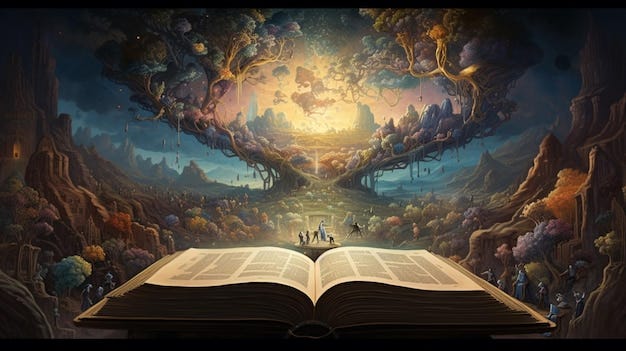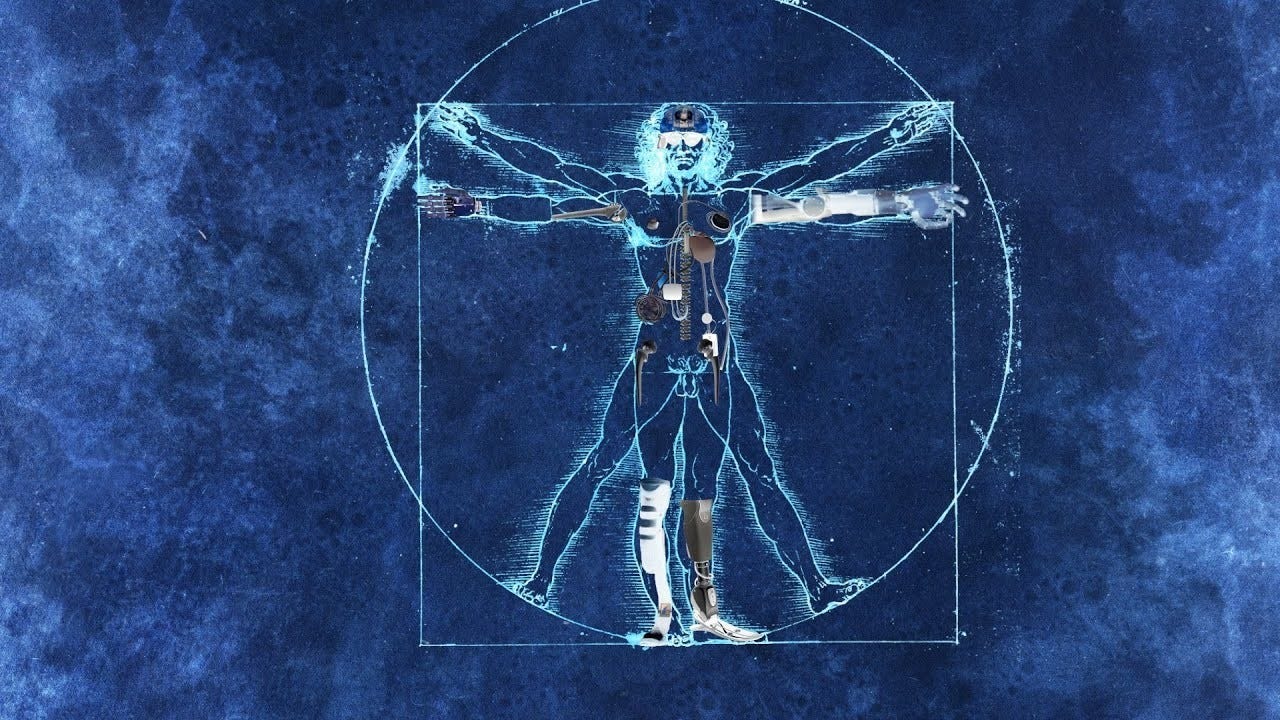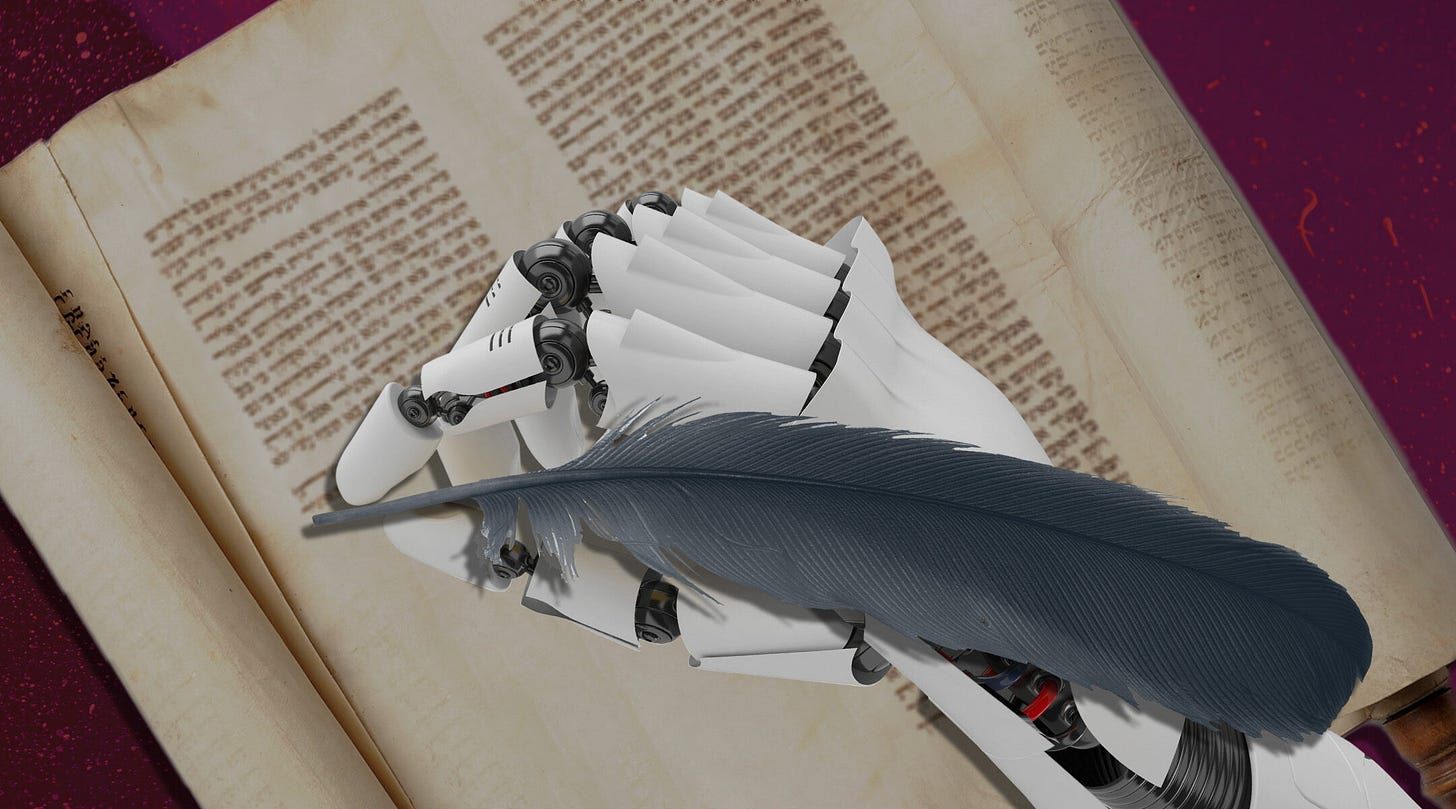Prophecy, AI, and the Future of Humanity
Decoding the Torah Codes, Ancient Predictions, and Their Alarming Parallels to Modern Events
Introduction:
In a recent thought-provoking interview, renowned author and researcher Gregg Braden explored the profound intersections between ancient prophecies, contemporary geopolitics, and the rapidly emerging influence of Artificial Intelligence (AI) in shaping our understanding of the future. From the enigmatic Torah codes, which some believe harbor hidden knowledge about both past and future events, to the unsettling implications of AI rewriting sacred texts, Braden’s insights challenge conventional perceptions of fate, prophecy, and free will. In this article, we’ll delve into the key themes from the interview, providing an in-depth analysis of how ancient wisdom, modern global tensions, and technological advancements may profoundly shape our spiritual and cultural futures in ways we never imagined.
The Torah and AI – A New Frontier in Sacred Knowledge?
AI and the Digital Interpretation of Sacred Texts
With the rapid advancements in artificial intelligence, its role in interpreting, analyzing, and even rewriting sacred texts has become a subject of significant debate. Among the most revered and ancient texts is the Torah, which has long been the focus of AI-driven analysis, especially in the context of Torah Codes. However, recent proposals suggesting the use of AI to rewrite or reinterpret the Torah raise profound ethical and spiritual concerns.
Braden is emphatic in warning against allowing AI to modify sacred texts, stating:
“AI is a reflection of human input—it does not have wisdom, it does not have a soul, and it does not understand the deeper essence of these texts. When we allow AI to rewrite scripture, we risk losing the sacred intent that has guided civilizations for millennia.”
For Braden, AI lacks the consciousness and spiritual depth required to truly comprehend divine wisdom. While AI can analyze patterns and structures, it cannot grasp the essence of the Torah’s profound spiritual teachings.
Can AI Truly Understand Divine Wisdom?
A core concern revolves around whether AI can genuinely interpret divine messages. Unlike human scholars who rely on faith, philosophy, and historical study, AI operates solely on pattern recognition and probability models. Braden raises a crucial question:
“If AI rewrites the Torah, is it still the Torah? Or is it merely a human-engineered version, devoid of its divine essence?”
Many scholars argue that the Torah is not just a text—it is a living entity, rich with layers of meaning that require human intuition, ethical judgment, and spiritual wisdom to interpret. As AI lacks faith, emotion, and lived experience, it cannot replicate the human ability to engage with sacred knowledge.
The Potential Dangers of AI-Modifying Sacred Texts
Braden articulates several significant dangers posed by AI’s involvement in rewriting religious texts. He warns that AI-generated versions of the Torah, or any sacred text, could:
Lose Authenticity – “The Torah has been meticulously preserved for thousands of years. If AI rewrites it to fit modern narratives, does it still remain sacred?”
Introduce Bias and Censorship – “AI is trained on human data, which is already influenced by biases. What happens when religious texts are filtered through AI’s inherent biases—who controls the message then?”
Weaken Spiritual Connection – “Sacred texts are more than words; they carry the power of tradition, divine wisdom, and connection to something greater than ourselves. If AI alters them, are we not severing that connection?”
Braden emphasizes that AI is not neutral—it is shaped by human biases and the data on which it is trained. This means an AI-modified Torah could distort the original message, potentially reflecting modern ideological or political agendas instead of preserving its divine intent.
The Torah Codes and AI: A Collaboration or a Threat?
Braden also acknowledges that AI has already been employed in the study of Torah Codes—hidden patterns within the Torah’s original Hebrew text that some believe hold prophetic insights. AI-powered pattern recognition has enabled researchers to uncover correlations that would have taken human scholars decades to detect.
Braden presents a paradox:
“AI can help reveal the codes, but it cannot understand their meaning. The wisdom behind these codes is something only human consciousness can truly grasp.”
This distinction is essential:
AI can assist in Torah study, identifying hidden structures and historical connections.
But AI must never dictate the meaning or alter the message of sacred texts.
Braden suggests that AI should be viewed as a tool for discovery, not modification. While AI may help scholars uncover deeper layers of the Torah, it should never be entrusted with altering the sacred wisdom embedded in the text.
The Future of AI and the Torah: A Call for Ethical Boundaries
As AI continues to evolve, it is essential for religious scholars, ethicists, and technologists to establish clear ethical guidelines on how AI interacts with sacred texts. Braden emphasizes:
“Technology is a powerful tool, but it must be used responsibly. The moment we allow AI to dictate spiritual truth, we lose something priceless—our connection to the divine.”
Important questions need to be considered:
Should AI be permitted to “rewrite” sacred texts, or should its role be confined to research?
How can we prevent AI interpretations from introducing political or ideological distortions?
Can AI-generated insights be validated through traditional religious scholarship?
Braden’s message is clear: while AI can play a role in Torah research, it must never have the power to alter sacred texts. The Torah, which has served as a guiding light for civilizations for millennia, must be treated with reverence, responsibility, and wisdom—not manipulated by machines.
AI and the Rewriting of Sacred Texts – A New Paradigm of Interpretation
The Risks of AI Rewriting the Torah
Another significant topic raised by Braden is his concern about the role AI might play in altering sacred texts, such as the Torah. As AI technology advances rapidly, some have proposed using AI to reinterpret or even rewrite religious scriptures. Braden expresses deep caution, highlighting that AI's inherent biases could lead to distortions of the original meanings and spiritual messages embedded in these texts. He points out that AI is governed by algorithms created by humans, which means it inevitably mirrors human biases—whether political, cultural, or ideological.
“The AI proposed to rewrite the Bible is already skewed,” Braden warns. Given that AI systems are trained on vast datasets, much of which reflects societal norms and digital censorship, he argues that AI’s interpretation of sacred scriptures is already compromised from the outset. This raises an essential question: Can AI truly honor the depth and nuance of spiritual wisdom, or will it simply reflect the limitations and flaws of the data it processes?
The Limitations of AI in Spiritual Interpretation
Braden’s concerns emphasize a core philosophical issue at the intersection of technology and spirituality. While AI can analyze vast datasets with impressive precision, it lacks the empathy, intuition, and moral depth required to interpret spiritual matters. The crux of Braden’s argument is that AI may be capable of making technical adjustments or offering logical analyses, but it cannot grasp the intangible essence of sacred texts—the wisdom, emotions, and spiritual truths they carry.
Moreover, the biases inherent in AI systems could significantly influence how ancient wisdom is understood. As Braden points out, AI does not operate in a neutral space; it is shaped by human input, which is inherently flawed. Therefore, entrusting AI with the task of altering or reinterpreting sacred texts risks distorting their original meaning and, ultimately, their spiritual integrity.
Ancient Prophecies and Their Parallels with Modern Global Events
Prophecies That Have Manifested in Modern History
Braden explores how ancient prophecies, particularly those encoded in the Torah, align with modern historical events. Some of the most striking examples include:
The Assassination of John F. Kennedy (1963)
The Torah code allegedly contains references to "President Kennedy," "Dallas," and "assassination" appearing in close proximity—something that has fascinated researchers who believe the text holds predictive power. While skeptics argue coincidence, the remarkable clustering of these terms raises questions about the Torah’s ability to foreshadow pivotal events in history.The 9/11 Twin Towers Attack (2001)
Another chilling example is the September 11 attacks, where terms such as "Twin Towers," "airplane," "terror," and "bin Laden" have been found encoded within the ancient Hebrew text. Braden highlights this as an example of how prophecy does not dictate a fixed fate but rather presents a possible future that can still be altered through human awareness and action.The Rise of Hitler and the Holocaust (1930s-1940s)
In one of the most unsettling Torah code findings, researchers claim that the words "Hitler," "Nazi," "Auschwitz," and "Holocaust" appear within related passages. This has fueled discussions about whether the Torah codes serve as warnings that, if properly understood, might help prevent future atrocities.The Challenger Space Shuttle Disaster (1986)
Another notable Torah code discovery allegedly includes references to "Challenger," "space shuttle," and "explosion," which some interpret as forewarning the tragic accident that took the lives of all seven astronauts on board.
Connecting Prophecy with Today’s Global Crises
Braden also explores prophecies that seem to parallel ongoing geopolitical tensions, particularly in the Middle East. A striking example he discusses is the biblical prophecy of Armageddon, which has been associated with growing conflicts in the region.
One of the more alarming Torah code findings suggests a potential “Holocaust of Israel”, with direct references to Syria, Bashar al-Assad, and the Golan Heights—a highly strategic and contested area. Given the escalating hostilities between Israel, Iran, and Syria, some view this as a potential warning of a large-scale conflict looming in the near future.
However, Braden is quick to clarify that these prophetic codes do not predict an unavoidable destiny. Instead, they reveal possible futures—ones that can still be changed through human decisions. “Will you change it?” Braden asks, reinforcing the central theme of free will embedded within the Torah codes.
Human Agency and the Future of Global Events
Braden’s interpretation of these prophecies carries a powerful message: humanity is not powerless in the face of fate. While historical patterns might suggest a predetermined path, Braden insists that our choices—both as individuals and as a collective—ultimately determine whether we repeat past tragedies or steer toward a more enlightened future.
This perspective is particularly relevant in today’s turbulent world, where political and environmental crises seem to be accelerating. Braden challenges people to move beyond fear and fatalism, instead urging them to take conscious action toward peace, cooperation, and sustainability.
Ultimately, the Torah codes do not serve as an unavoidable script but rather as a cautionary guide, reminding us that while history may echo itself, the future remains in our hands.
The Role of Human Consciousness in Shaping the Future
The Power of Consciousness in Navigating Prophecies
Braden emphasizes that human consciousness is the key to unlocking the potential for transformation, both on an individual and collective level. The Torah codes, with their encoded messages of potential futures, do not dictate an inevitable path; instead, they serve as a reminder of the extraordinary power humans possess to shape the course of their lives and the world around them. Braden firmly believes that humanity is not simply at the mercy of predestined events, but rather has the capacity to influence the future through conscious intention and action.
"Prophecies are not locked in time," Braden explains. "They are reflections of possible futures, and the future is malleable. We are not prisoners of fate, but the architects of what is yet to come."
This perspective calls for a shift in how we view prophecies and the choices we make. Instead of seeing the future as a series of fixed events, we are encouraged to see it as a landscape of possibilities that we can actively engage with and reshape. This empowers individuals and societies to approach global challenges with a sense of agency, responsibility, and hope, knowing that the course of history is not predetermined but is shaped by conscious decisions.
Analytical Insights: Collective Human Consciousness and Global Change
Braden's ideas draw parallels with modern scientific understandings of consciousness and quantum physics, which suggest that the universe is interconnected and responsive to our thoughts and actions. Quantum mechanics proposes that observation itself influences the outcome of experiments, which resonates with Braden's belief that collective human consciousness can influence future outcomes. Just as quantum particles behave differently when observed, our thoughts, decisions, and intentions can potentially impact the world on a larger scale.
This perspective has profound implications for how we address global crises. By recognizing the role of human consciousness in shaping the future, we are encouraged to adopt a more mindful and intentional approach to decision-making—whether in politics, environmental action, or social issues. The message is clear: the choices we make today have the power to alter the course of the future, and by coming together in collective action, we can create a more harmonious world.
The Intersection of Technology and Spirituality
The Role of Technology in Expanding Human Consciousness
As AI and technology continue to advance, Braden acknowledges the role they can play in expanding human consciousness and understanding of ancient wisdom. While he cautions against allowing AI to alter sacred texts, he also recognizes that technology can be a powerful tool for discovery and spiritual growth. AI, when used responsibly, can help unlock new insights into the Torah, provide a deeper understanding of sacred texts, and offer a broader perspective on ancient wisdom. In this way, technology can complement spiritual exploration, offering new ways to explore and interpret the mysteries of the universe.
However, Braden insists that this exploration must be done with caution and ethical consideration. Technology should serve as a tool for discovery, not as a means of rewriting or distorting the sacred messages that have guided humanity for millennia. Just as the Torah has preserved its wisdom for thousands of years, the use of technology in spiritual exploration must be rooted in respect and reverence for the traditions that have shaped human consciousness.
Technology as a Tool for Human Evolution
Braden’s insights highlight the need for ethical boundaries in the application of technology, especially when it comes to areas that intersect with spirituality and sacred knowledge. As AI and other technologies advance, it is essential that we establish clear ethical guidelines to ensure that these tools are used in ways that enhance human consciousness and promote spiritual growth, rather than detracting from it.
One of the central ethical concerns Braden raises is the potential for technology to be misused for ideological or political purposes, potentially distorting the sacred truths embedded in religious texts and spiritual traditions. He emphasizes the importance of maintaining a deep connection to the divine and to the wisdom of the ancients, even as we embrace technological advancements. The challenge is to strike a balance between embracing the benefits of technology while maintaining our spiritual integrity and respect for the sacred traditions that have stood the test of time.
Embracing Prophecy and Technology for a New Era
A Vision for the Future
Braden's reflections on the intersection of prophecy, AI, and spirituality invite us to reimagine our relationship with the future. Rather than seeing prophecy as a fixed and immutable outcome, he encourages us to view it as a guiding framework—a roadmap that offers insight into possible futures, while also leaving room for human choice and agency. In the age of technology, we are called to embrace both ancient wisdom and modern innovation, allowing them to work together to create a future that is aligned with our highest potential.
In this new era, it is essential to recognize the profound responsibility we hold as individuals and as a collective species. Our choices today will shape the world we leave for future generations. Through conscious action, ethical use of technology, and a deep reverence for the sacred wisdom of the past, we can create a future that is not dictated by fate, but rather shaped by our collective will and shared values.
A Call for Conscious Evolution
Braden’s message is one of hope and empowerment. In a world where technological advancements and global challenges seem to be unfolding at an unprecedented pace, it is easy to feel overwhelmed or powerless. However, Braden reminds us that we are not powerless in the face of these changes. Through conscious evolution, we can navigate the complexities of our time and create a future that reflects our highest values.
The ancient prophecies encoded in the Torah are not fixed destinies; they are maps of possibility. And through the responsible use of technology, a deeper connection to the divine, and a commitment to conscious decision-making, we have the ability to transform these possibilities into a future that reflects our collective highest aspirations.
In the end, the future is not written in stone—it's a work in progress, and we hold the pen.










